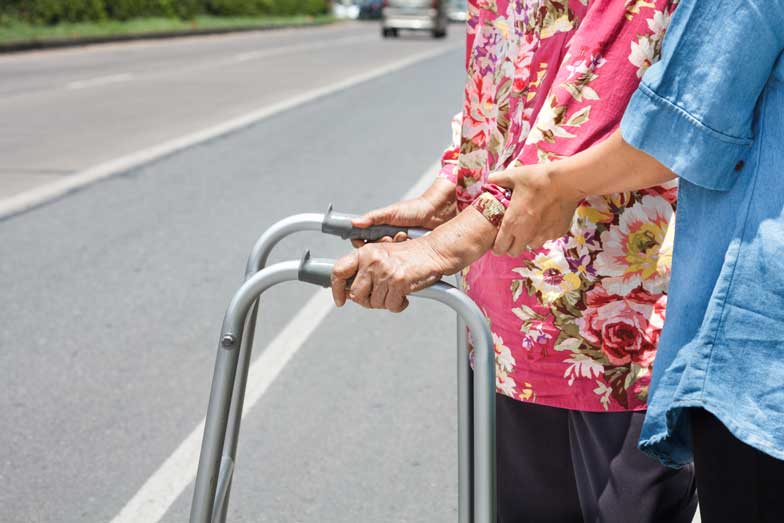What are ADLs and IADLs?
The Basic ADLs Include:
1. Eating
2. Bathing
3. Dressing
4. Continence
5. Using the restroom
6. Transferring (the ability to move oneself
Why are ADLs Important?
ADLs, or Activities of Daily Living, are tasks a person performs throughout the day. As we age, our ability to remain independent is contingent upon our ability to perform ADLs. Around half of all Americans entering care facilities do so because they are unable to perform ADLs. Once someone begins to need help with some of these basic ADLs, it could mean they are no longer safe to remain independent. Coverage for nursing costs requires that a person be unable to perform at least two basic ADLs.
The level of care varies depending upon the severity of the ADL that is unable to be completed. Most long-term care is not medical care but rather assistance with ADLs, and people can choose from in-home care to assisted living or a nursing home.
What are IADLs?
There is also a group of activities called IADLs, or Instrumental Activities of Daily Living. IADLs include cooking, driving, caring for pets, completing housework, using the phone or computer, shopping, managing finances, and keeping track of medication. Oftentimes, people who are unable to perform one or more IADLs can still remain independent with a little bit of outside help. This help could come from adult children or from a home health worker or aid. IADLs are the activities that keep a person independent and maintain quality of life but are not necessarily life-threatening if unable to be performed. For example, it is far less detrimental if someone can no longer drive than if they can no longer transfer alone.
Signs That Someone May Need Help with ADLs or IADLs
It is not always easy to recognize when a loved one needs help. Many older adults may try to hide difficulties due to pride, fear of losing independence, or simply not realizing how much their abilities have changed. Here are some common warning signs that indicate a person may need assistance:
ADL-Related Signs
- Difficulty with personal hygiene – If someone is not bathing, brushing their teeth, or changing clothes regularly, it may be due to physical limitations or cognitive decline.
- Struggles with mobility – Trouble standing up from a chair, getting in and out of bed, or frequent falls can indicate the need for assistance.
- Changes in eating habits – Significant weight loss or expired food in the fridge may signal that meal preparation and eating have become difficult.
- Neglecting bathroom needs – Incontinence issues or difficulty using the toilet independently are major indicators that help is needed.
IADL-Related Signs
- Unpaid bills and financial trouble – Stacks of unopened mail, late notices, or confusion over finances may indicate an inability to manage money effectively.
- Household disorganization or neglect – An unusually messy or dirty home could be a sign that routine chores have become overwhelming.
- Forgetting medications – Missing doses, taking incorrect amounts, or confusion about prescriptions can pose serious health risks.
- No longer driving safely – Increased accidents, getting lost, or reluctance to drive could indicate that it’s time to reassess transportation options.
- Social withdrawal – Avoiding activities they once enjoyed, declining invitations, or increased isolation may be signs of cognitive decline or depression.
Do I Need Long-term Care?
When deciding what type of care is best for your loved one, it is best to have an honest conversation about what they can and cannot do. If certain tasks are becoming more difficult or will likely become impossible soon, it is better to devise a plan now rather than later.
Steps to Take When Evaluating Long-Term Care Needs
- Assess their daily functioning – Keep track of which ADLs and IADLs they struggle with and whether their limitations are getting worse over time.
- Observe their environment – Look for signs of neglect, safety hazards, or an inability to maintain their home properly.
- Have a conversation – Discuss their concerns, preferences, and fears about receiving help.
- Consult professionals – Speak with a doctor, medical social worker, or geriatric care manager to evaluate care options.
- Consider future needs – Plan for increasing levels of care, whether through in-home support, assisted living, or nursing home care.
- Look into financial and insurance options – Many people qualify for programs that help cover costs, such as Medicaid, long-term care insurance, or veterans’ benefits.
Recognizing when help is needed can be difficult, but addressing concerns early can ensure that your loved one receives the right care while maintaining the best quality of life possible. Whether the solution is minor adjustments at home or a transition to assisted living, planning ahead provides peace of mind for everyone involved.
Resources
For more information on long-term care options and assistance programs, consider the following resources:
Medicaid: A joint federal and state program that helps with medical costs for some people with limited income and resources. Medicaid also offers benefits not normally covered by Medicare, including long-term care services and support.
- Official website: Medicaid.gov
Veterans Health Administration (VHA): Provides comprehensive healthcare services to eligible military veterans at VA medical centers and outpatient clinics across the country.
- Overview: Veterans Health Administration
Program of All-Inclusive Care for the Elderly (PACE): This Medicare and Medicaid program helps people meet their healthcare needs in the community instead of going to a nursing home or other care facility.
- Information: PACE Overview
National Council on Aging (NCOA): Offers resources to help older adults find benefits programs that help pay for prescriptions, healthcare, utilities, and more.
- Benefits CheckUp: NCOA Benefits CheckUp
Long-Term Care Medicaid Eligibility: Learn about Medicaid eligibility requirements for long-term care, including income and asset limits, and how to apply.


